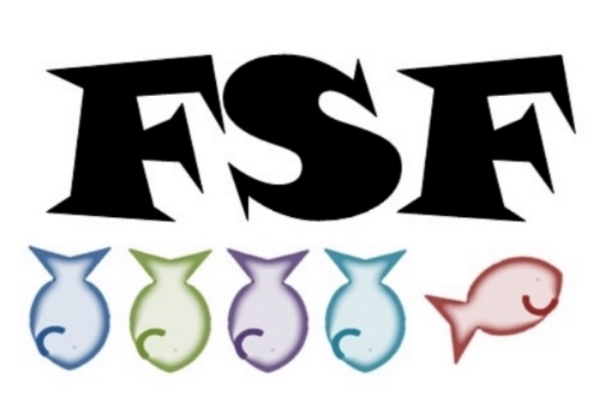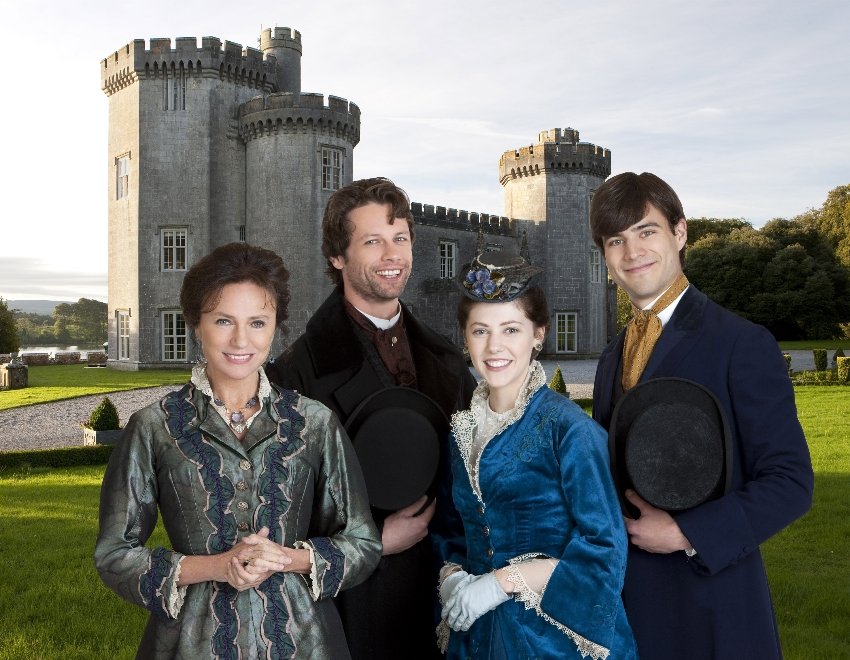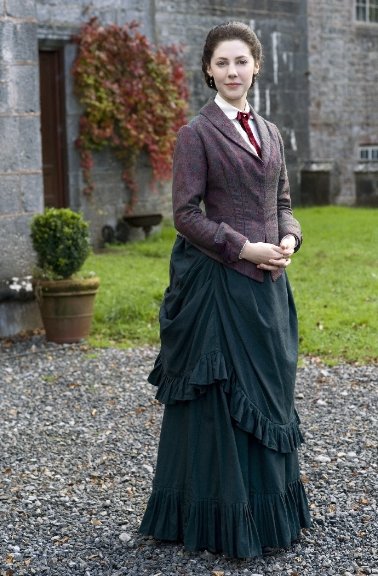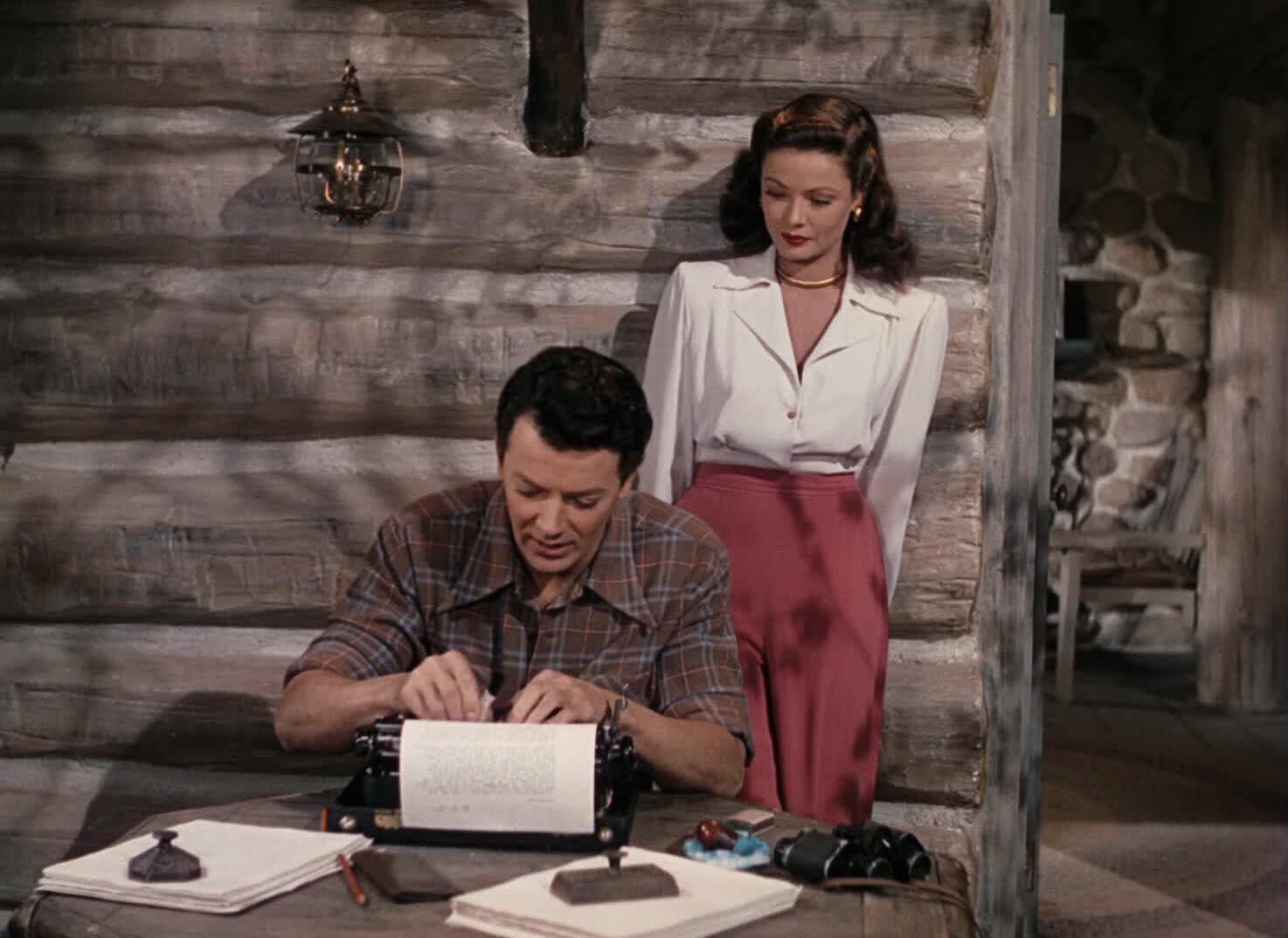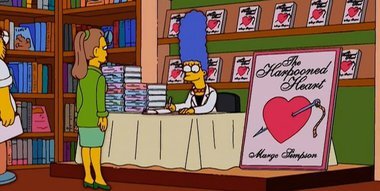Here we are again. Another holiday season and another round of mass-produced Christmas movies staring white TV actors who weren’t doing anything that week. I could get on my soapbox about these films and how they are not my thing, but instead I’m going to point out that after working in a bookstore for 12 years, I’m finally experiencing something by writer Richard Paul Evans. Nothing against Evans, I’m just not a big Christian fiction reader. But does this movie movie fit perfectly into this blog theme? Surprisingly yes. Like very much yes. Like I kinda hate how much I associated with parts of this movie. There was a long, hot shower after I finished watching.
This one is about Kim (Alicia Witt) who has been working on a romance novel for a long time, feeling like it’s not ready yet and will not allow others to read it except her dad (a fact which causes her boyfriend to break up with her, saying he wants to be in a relationship with another “real writer”).
Okay, Hallmark! I feel personally attacked. How dare you! Just because some of us writers want to make sure things are just so and might do 6 or 7 rewrites then spend nearly 2 years in editing does not mean we are not “real writers". How dare you question.
Kim goes to a writing retreat made up of a series of workshops. There she meets Zeke, a writer who uses a typewriter that he claims is the same model Hemingway used, and they proceed to insult each other in a lackluster meet-cute.
I hate the Hemingway typewriter cliche, by the way. Other famous writers used typewriters! You don’t have to idolize the rum-guzzling, narcissistic embodiment of toxic masculinity. Why can’t a writer in a movie ever once say “I use this brand of typewriter because Maya Angelou used it” or how about Douglas Adams or Mark Twain or. . . I confess I looked up a list of famous authors who used typewriters for this rant.
Amazingly, Mistletoe Inn doesn’t get you drunk according to the rules of the Hallmark Christmas Movie Drinking game. Just tipsy. Not that I tried it…
Kim makes friends with another writer, Samantha (Lucie Guest) who has been to the conference before and helps Kim be judgy towards her ex-boyfriend who is also at there. The ex-boyfriend of course uses all of his allotted dialogue to keep reminding Kim that she’s not a serious writer. Samantha also scolds another author (I didn’t catch the character’s name) who tries to make all of the new people feel like crap who have not being published yet. I’m sorry to say, but this felt like the most realistic part of the conference to me. There’s always at least one published snob ready to bring other people down and shatter their confidence.
The workshops Kim attends included a really good quote from a visiting editor. “This is a safe space for ideas. Writing is brave work. Ridicule is the tool of shallow people. Don’t be one of the shallow people.” Damn, Richard Paul Evans! Who hurt you at a writing conference? Whoever it was I hope they saw your first bestseller. I’m not a fan of your books, but damn dude! Mad props to whatever you survived at one these workshops.
The other quote I liked came from Zeke when he tries to show Kim how to handle the criticism of crabby, overly critical publishers and agents. This was inspired by him convincing her NOT to sit through a lecture by a notorious dream-killer (yep, been to those lectures before. My favorite part is when you ask a specific question and they manage to insult you without answering the question). “Every tiny victory along the road is worth celebrating. . . . that the point of writing is not be discovered, but rather self-discovery that hopefully other people can enjoy.” I’m not sure if that comes from the original book or it comes from the teleplay writer Michael Nourse, but DAMN!
As this is a Hallmark movie, Kim and Zeke fall in love over a course of snowball fights, warm romantic dinners, and more writing exercises. I mean literal writing exercises. That’s not an innuendo. I actually made a squee noise when Zeke tries to give her constructive criticism (legit, constructive criticism about how a first draft always needs tweaking). She takes this way too-hard, but again, I think she doesn’t understand what a FIRST DRAFT is! Case-in-point, I repeatedly called one of my finished first drafts “the turd” and my boyfriend said I should work on a second draft so it can at least be a “gilded turd”. I always go to Kira Shay and Sidney Reetz first because we’ve been sharing writing ideas since we were in high school. This is totally related to how the movie’s main theme about trusting the people who share your work with, but also being willing to share.
I’m going to end this one here, but other than the highly predictable romance sub-plot, I didn’t hate this one. Fine Hallmark. You won this round.
Image property of Hallmark. Also, they’re both writers. Why does he get to hold all of the writing materials
